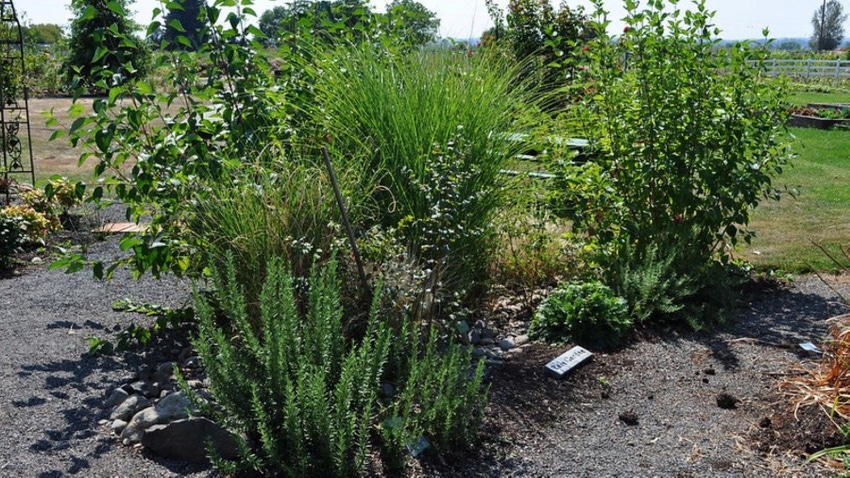
As water runs down roofs, over driveways and patios and off other impervious surfaces, it might pick up pollutants as it flows directly into streams, wetlands, lakes and groundwater aquifers.
Stormwater runoff from impervious surfaces has been routed directly to streams through stormwater pipes and ditches with little infiltration or treatment, according to Derek Godwin, Oregon State University Extension Service water management and conservation specialist.
That’s because municipalities focused on getting the water off the property as quickly and efficiently as possible. However, stormwater runoff has become the No. 1 source of residential pollution for waterways. It also increases potential flooding.
Municipalities have responded, installing rain gardens, a type of green infrastructure, in public and commercial spaces to slow down and treat the water before it enters streams, wetlands, lakes and groundwater aquifers. They encourage homeowners to build them, too.
Designed and installed properly and planted with the correct plants, rain gardens are like tiny water treatment facilities. Water gathers in the rain garden, soaks into the soil and is taken up by plants. The water not used by plants moves into deeper soils and groundwater or flows more slowly to nearby streams. The plants and soils filter nutrients, sediments and toxic materials from the runoff before it gets to waterways.
“Homeowners interested in treating stormwater runoff with rain gardens should first familiarize themselves with how runoff from their roof, driveway, sidewalk and roads are currently being routed and treated,” Godwin said.
“Runoff water moving on the surface could be incorporated into a rain garden design with sufficient area and infiltration rates,” he said. “Runoff drains into the rain garden downslope from foundations and, if it can’t all be absorbed, flows out to a safe, designated location at a slower rate than from impervious surfaces.”
Re-routing water
Runoff water being piped underground to a street curb and stormwater drain would need to be modified by disconnecting the downspout and routing the water to a rain garden. Godwin recommends checking with your local jurisdiction to see if building and routing runoff through a rain garden would benefit water quality, reduce flooding and be permitted for individual property conditions.
If approved, the municipality will provide any requirements you must follow such as where to safely route water during large storms to prevent erosion and protect nearby homes, roads and other infrastructure.
For more information about rain gardens and thorough instructions on how to build one, refer to The Oregon Rain Garden Guide, which Godwin co-authored.
Rain gardens can be designed with a variety of plant types and sizes that offer beauty and bird and pollinator habitat. Since the garden is designed to drain, you don’t need plants that withstand months sitting in water, such as broadleaf cattail (Typha latifolia).
However, areas at or near where water enters the rain garden are frequently flooded and require plants that survive short periods of standing water and extended periods of saturated soils, while plants on the rim should be suited for drier conditions.
Designs, list of plants
The Rain Garden Guide includes designs and lists of plants for all areas of the state that work in sun or shade. The lists also indicate which plants work in different areas of the rain garden, from wet to dry.
Rain gardens are divided into three zones: top (dry), slope (moderate) and base (wet). The U.S. Department of Agriculture’s wetland plants database is another good source of native plant information. Also, check nurseries that specialize in ponds.
Godwin recommends selecting plants that can withstand dry summers with little to no extra water or fertilizer after they’re established in two or three years. He also suggests keeping stormwater runoff out of the rain garden for at least one year to allow plants and soils to settle in.
The goal is low maintenance, but, like any areas of the garden, it will need some upkeep, including weeding, pruning and mulching and possibly relocating plants that don’t withstand the wet and dry periods.
Avoid standing water
It seems intuitive to route stormwater runoff to a spot where there’s standing water during the wet season, but that’s exactly what not to do. The soil in a stormwater rain garden needs to drain well for the water to be treated.
Don’t put more water in these spaces, Godwin said. Instead, add wetland plants evolved to live in standing water and enhance biodiversity and pollinator habitat.
Rain gardens slow the water down and allow it to soak into the ground and move slower to the streams. The slower it goes, the less erosion and flooding. The fine sediment that comes with the water causes problems for fish habitat and other aquatic species that rely on clean gravel to see and feed and live and lay their eggs.
In addition, a lot of pollutants are attached to the sediment. For example, when phosphorus as part of fertilizer gets into water in excess it contributes to algae blooms and lower dissolved oxygen.
“A rain garden would be like other gardens around your yard – it’s meant to drain, it isn’t supposed to be a wetland,” Godwin said. “The difference is during the rainy season it gets more water than other gardens. You’ll have to choose plants that can withstand higher amounts of water during the wet season. On the other hand, they also have to survive our dry summers.”
Source: Oregon State University
About the Author(s)
You May Also Like




